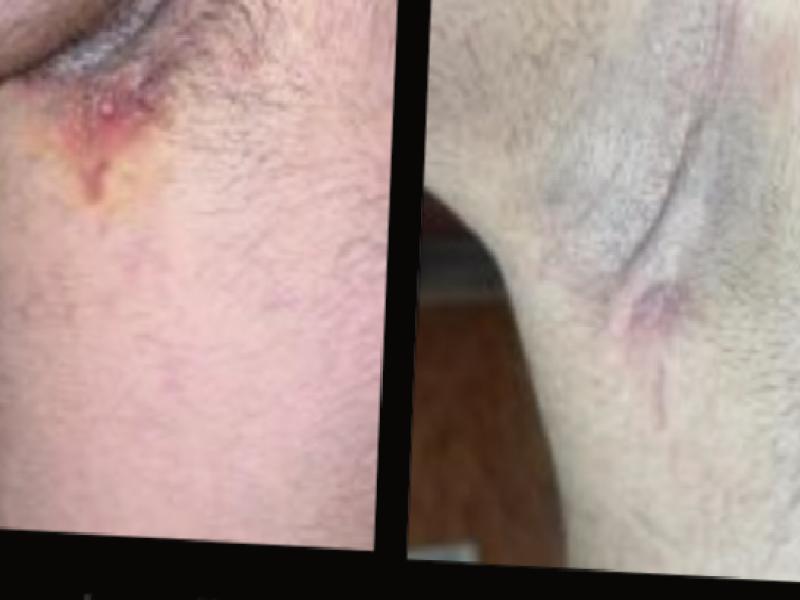1. Hidradenitis Suppurativa (Dog Mammary Disease)
2. What is HS?
Let’s call it HS for short because it has a very long name.
It is a chronic disease that occurs during and after adolescence.
It can last for a very long time and early diagnosis is especially important in terms of controlling this disease. While some cases may be very mild depending on early diagnosis, or very few of them pass completely, they usually do not last a lifetime.
Although there is information about attacks and triggers, the cause of the first occurrence is not known yet.
3. Which Regions Does HS Involve?
Canine udder disease (HS) ; It occurs in the armpits, under the breasts or in the chest area, in the groin, on the hips and in the anogenital area, in fact, in places where the hair density is high in general.
It develops with discharge and painful swellings.
Scars can be seen in one or more areas of the body.
Its severity may vary depending on the stage it is in.
4. HS Effects ?
Pain can be observed from mild to very severe, and it can significantly reduce the quality of daily life in direct proportion to the severity in cases due to conditions such as pain and discharge, especially during active periods.
It is known that HS becomes infected with the clogging and narrowing effect of sweat glands in the affected areas and occurs with the progression of the event.
4.1. Triggers
• Genetic predisposition
• Hormonal factors,
• smoking,
• Nutrition with high glycemic index foods
• Being overweight
In such cases, the severity of the disease increases.
4.2. Hidradenitis suppurativa (dog udder disease)
• severe acne,
• arthritis,
• diabetes,
• metabolic syndrome,
• inflammatory bowel diseases
• It can be seen together with pilonidal sinus.
Early diagnosis and treatment will help patients to regress complaints such as pain, relieve symptoms such as discharge and odor, prevent the formation of new ones as they regress, and reduce the scars that may occur afterwards.
This picture can also cause many secondary problems such as infection, fistula, contracture (adhesions) and related limitation of movement and lymphedema in the area it affects. It is also known that skin cancer can develop over the years on the scars formed in the case of not paying attention and taking the correct precautions.
5. Treatment
5.1. Surgical
Although external cortisone or antimicrobial creams are used to control the disease, it has been observed that the effects are very low after a while. Antibiotic treatment, on the other hand, is not recommended for a long time by many physicians, especially since it disrupts the intestinal microbiota and the course of the disease will not improve as a result of the deterioration of the microbiota.
In surgical treatment, the cases give more positive results as the area where HS is located is cleaned.
5.2. Nutrition:
In cases,
bki,
life style,
by age and gender
As a result of a program organized according to the nutritional principles (DSh) that should be applied in HS and HS (Dog Mammary) disease, serious improvements, increased quality of life, almost no reduction in pain and healing of wounds were observed.

